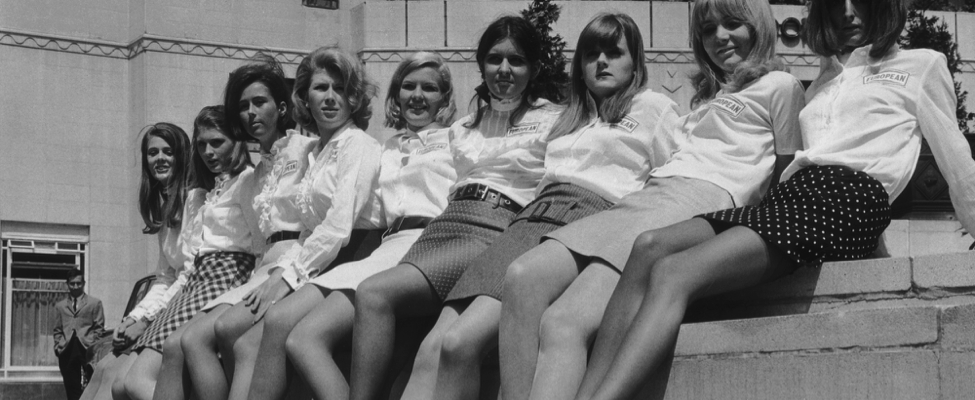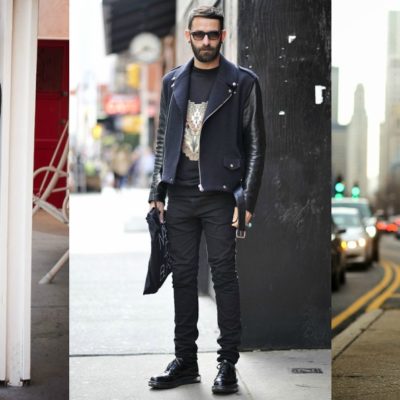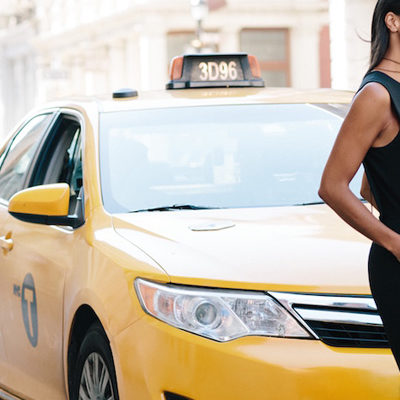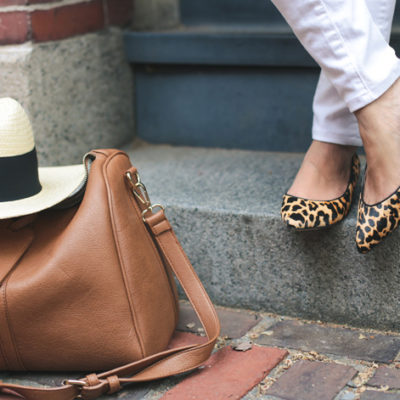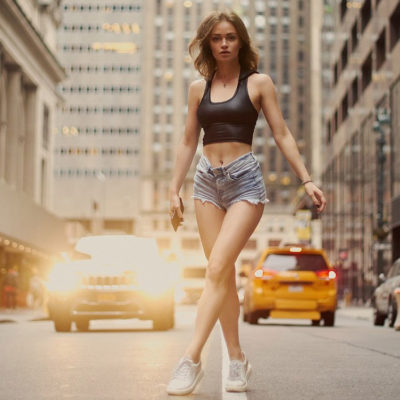Watching fashion develop through the ages is like having a time-travel machine. There’s so much more to clothes than just aesthetics; other than reflecting our personality and inner self, it also reflects history, technology and the way different nations mixed together due to various factors.
Well, Australia is quite specific when it comes to fashion. Because of its interesting geographical position, the development of fashion on this island was significantly different when compared to other continents.
The way fashion changes is based on various influences, no matter if they come from the music industry, a particular social movement, a fashion icon or something completely unrelated to these factors. So, let’s go back in time and see how everything started, and which twists led to this moment in fashion.
Men Can Fly
The beginning of the 20th century was marked with an incredible achievement and a big step forward for mankind – airplanes. Considering the fact that this was a human dream since we first started to use our imagination, aircrafts influenced different industries, the economy, agriculture and – among everything else – fashion.
Obviously, everything about fashion changed with this technological breakthrough, but mostly for men. Even though not all men were pilots – believe it or not – everyone dressed like that was the only profession in Australia.
The biggest fashion events were air shows, and everyone was wearing aviation equipment. I think we can feel free to call this period of fashion the aviation era, because everywhere you’d turn you could see men wearing aviator jackets and all kinds of aviation accessories, including goggles.
This was quite convenient, really, because most motor vehicles were without tops, so other than being fashionable, wearing goggles also had a protective purpose. Interesting, huh?
When it comes to women, they had just stopped wearing corsets and moved on to more comfortable dresses. Maintaining very pale skin was still very popular, so no woman ever left her house without her parasol.
So, imagine the Ford Model T, a fabulous guy in an aviator jacket wearing goggles and a woman in a long glowing dress wearing a fabulous hat with emu feathers. Put all of that in black and white and there you have it – a fashionable couple in the 1920s.
30s & 40s
The aircraft craze and aviation fashion lasted for 30 years. Can you imagine a trend so popular nowadays? Unlikely, I believe. Perhaps we’ll all switch to wearing space outfits when affordable space travel finally becomes a real thing, but that might take some time.
After everyone finally got tired of goggles and leather, materials like chiffon, velvet and georgette started to become more popular. This is the point where fashion in Australia was heavily influenced by Chinese, Egyptian and Japanese trends.
Mainstream fashion was all about surcoats, kimonos and overdresses, but this strong foreign ethnical influence was toned down a bit with the use of silk. Evening coats became more flowing and lighter. The most precious ones were embroidered with motives from Egyptian, Chinese, Japanese and Australian culture and decorated with fur.
During the 40s and after the war, trousers were finally accepted as a part of women’s fashion. This was possible mostly because women participated in the war effort, but also because there were a lot of immigrants flowing into the country, and their daughters were more open-minded and welcomed new trends.
Heavy and uncomfortable materials were put aside, and they were replaced with light wool and linen, which are more than appropriate for the Australian climate.
The Queen, Dior & America
In Australia, the 50s were the era of Australian Vogue, Marie Claire and Harper’s Bazaar, but the most influential magazine was definitely The Weekly. After the postwar years, it seemed like everyone was finally relieved and was eager to take a few deep breaths, relax and devote their time to fashion.
This is exactly when women’s fashion started to flourish. However, the rules were quite strict and there were many things you needed to bear in mind if you wanted to be considered woman of style.
For starters, a woman couldn’t leave her house without her umbrella and her hat. Every part of the day and every type of occasion had its dress code, so showing up to a dinner party in a daily outfit would be a social disaster. That was the occasion for a cocktail dress, but when the clock strikes eight that outfit practically turns into Cinderella’s after-twelve look.
These strict dress code rules were widely accepted by women all over Australia, because the eyes of fashion experts worldwide finally turned towards this continent. In 1948 Christian Dior himself organised the first official fashion parade outside of Paris, where he showed his Autumn/Winter collection and stated that Australia was the perfect setting for an innovative approach and fresh ideas, being that it wasn’t directly affected by all the wars.
Dior wasn’t the only influence that hit Australia in the 50s. This island survived a major fashionable impact with the arrival of Queen Elizabeth II. Before her official royal arrival, the leading British designer of the time, Peter Russell, was invited to Melbourne to assist their department store with the appropriate designs for women to wear during the Queen’s stay.
Obviously, this kind of preparation left its mark for years to come. Everywhere you’d look, there were extravagant ball gowns that were combined with carefully selected accessories, formal gloves and elegant tailored suits.
An interesting fact is that the Queen actually toned down the over-the-top extravagance that was becoming commonplace in Australian fashion. Her style was widely admired, and her affinities towards simplicity were a major fashion influence. That is when fashionistas drew a line between fabulous and too much, so combinations like too much jewelry and a dressy hat or too many petticoats became a no-no.
The fact is that fashion back then was way too expensive and really time-consuming. Australia’s fashion elite were the main topic of all the newspapers and magazines during the 50’s, so you practically couldn’t find a cover that didn’t feature a ball, a charity event, an afternoon reception or a fashionable meeting.
On the other hand, the demand for comfort was on the raise, which is when Australia turned to America and its designers. The most influential one was Claire McCardell, but they all used very practical and light materials for their designs.
Considering the fact that the climates of the two countries are quite similar, they obviously had relatable demands in terms of fashion. So, items like cotton sundresses, playsuits and casual slacks finally became a thing. The great thing was that all of these garments were made out of materials that are simple to maintain and very affordable.
The Age of Minis
After a while, it was about time that people got tired of all those strict rules, which is exactly what happened in the 60s. I believe that we’re all happy – men and women alike – that mini-skirts finally became a trend. This saturation with gowns and long heavy dresses obviously resulted in skirts and dresses getting shorter inch by inch, until they finally reached that mini size we all know and love.
This fashion current led to the appearance of the baby doll look, which was all about hotpants and pinafores. Vibrant colors, bolder makeup and playful skirts and dresses were everywhere on the streets.
The Hippy Movement
In Australia, the 70’s meant that sarongs, saris and skirts were totally in. This influence that came directly from Indonesia was a lot less formal than the traditional style, because it had to adapt to the Australian beachwear style.
Other than the Indonesian influence, the classical hippie look was no different in Australia than in any part of the world that supported the movement. So, free-spirited people connecting to nature, listening to great music in comfy colorful dresses and tunics, combined with recognizable hippie headbands were the norm.
Katie Pye & the 80s
It was about time that Australia focused on its own fashion icon, and that was no other than the incredibly talented Katie Pye. She marked this decade with her incredible sense of fashion, and her designs became a part of mainstream fashion.
That was all possible because of her desire to experiment with different forms of graphic and innovative textile treatments. When combined, they resulted in fresh designs, accompanied by bouffant hairdos and heavy makeup. I believe her bold actions where the reason why fashion evolved into a true art form in Australia.
The Anti-Fashion Decade
Finally, we come to the 90’s. This is the fashion era when all currents collided, and when there was no such thing as a mainstream trend. All previous fashion eras had that one thing which everyone followed and built their styles around, but the 90’s were all about diversity.
Basically, when you put together feminine and masculine, grunge and funk, new garments and old ones, you get the anti-fashion decade. Up until now, comfort was completely in the background of fashion, but the 90’s somehow managed to change all that.
Even the workwear became casual. Women wore stretchy tops, tailored skirts and comfy jackets, while men wore lightweight shirts and trousers. Considering the fact that feeling good in your outfit was the main goal during this era, sportswear was a major hit. Like most other countries of the world, Australia went crazy over Nike and Adidas.
There’s one other important thing I’d like to mention – air travel became a lot cheaper during this period, which meant that all that mingling influenced Australian fashion currents. Other than enjoying simple fabrics which were light and comfortable to wear, it was finally OK for young people in Australia to go crazy with dreadlocks, tattoos and piercings. Freedom of dress to all, right?
The New Millennia
Since we officially celebrated the arrival of the new millennia, it seems like many different fashion trends and currents switched and changed. When it comes to boys, they switched their faded jeans with baggy pants and long t-shirts, and the girls went for long floral dresses and flat-ironed straight hair.
But none of these was permanent, really. Trucker hats became a huge hit shortly after, and V-neck shirts followed them. When boy bands ruled the pop scene, streaky hair highlights were all the rage. Right after that, polo shirts and prints kicked in, then hoodies with blazers, cardigans and vests with bowties showed up.
When it came to women, denim overalls were quite a hit, but that’s not where everything stopped. Cowgirl shirts, fishnets, biker shirts, tank tops, asymmetrical skirts and many more completely different designs appeared. The only difference of the 00’s when compared to the 90’s was that everyone wore the same thing for a while, and then moved on to the next fashion fad.
Naturally, after all this madness, a short break in fashion occurred when everyone went minimalist, both women and men. For a while there, fashion was simple, elegant and classy. Thanks to globalization, that reflected on fashion as well, and stores in Australia were filled with minimalist shoes and minimalist everything.
The next time you visit a mall, you’ll be able to see over the knee boots, garments with emphasized high waist, Victorian and Boho fashion currents colliding together, diversity when it comes to gloves, fringe and fuzz, etc. There’s hardly a thing called local fashion anymore – Australia, like all other continents, has an enormous freedom of choice when it comes to selecting clothes.
Old fashion trends, like the ones popular during 80’s and 90’s have a way of coming back from time to time. Fashion is continuously evolving and growing by combining the old with the new, so you’ll always be able to simply build and upgrade your own style. Pretty great, huh?
